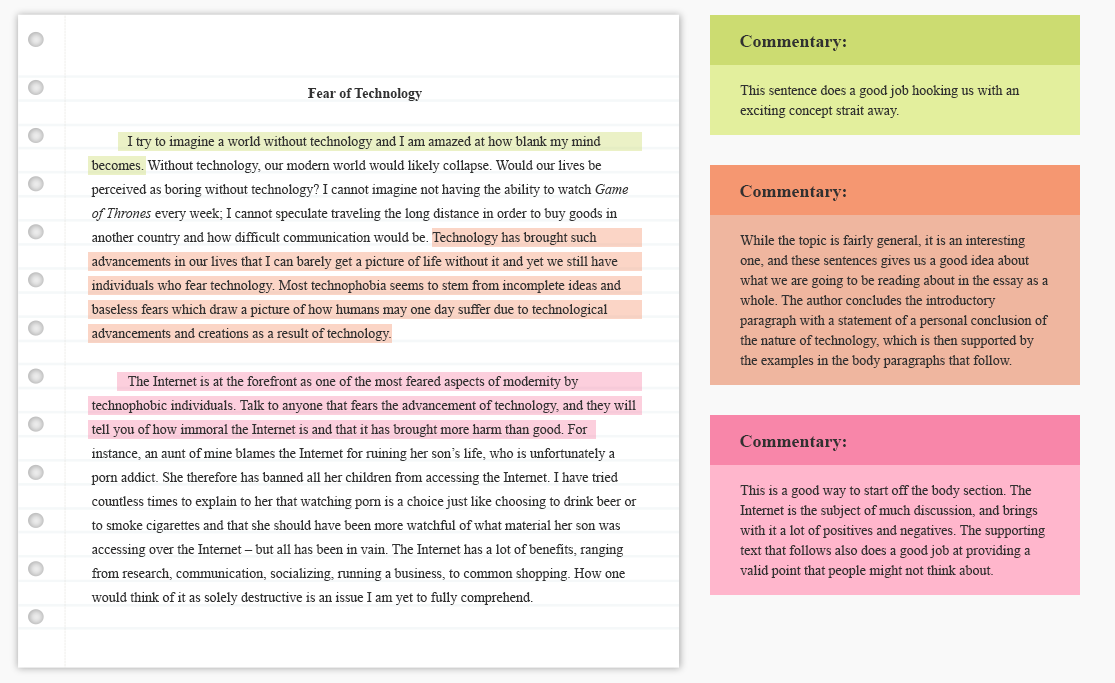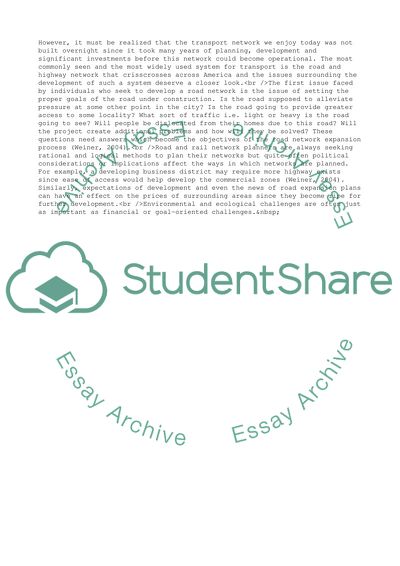
· If you’re struggling to start your narrative essay, find a way to encourage your reader to keep reading and introduce your main characters. Since opening lines can pull a reader in, choose something catchy that’s related to your story. For example, if your essay is about loss, you could open with a question like, “Have you ever faced losing something that’s important to you?” Then · The introduction should make sense and hook the reader right from the start. Make your introductory paragraph brief. Typically, just three or four sentences are enough to set the stage for both long and short essays · Hook the visitor in with an intriguing narrative that gives a hint as to what the article is about and she’s more likely to continue reading. Example: In the summer of , Stan Transkiy was 16 years into a life sentence, and he had finally found a way to occupy his time. —Colin Lecher, Ghost in the Cell. Here’s a tip: Even how-to articles can benefit from the storytelling technique
FREE 6+ Self-Introduction Essay Examples & Samples in PDF | DOC | Examples
Last Updated: April 19, References. This article was co-authored by Christopher Taylor, PhD. Christopher Taylor is an Adjunct Assistant Professor of English at Austin Community College in Texas. He received his PhD in English Literature and Medieval Studies from the University of Texas at Austin in This article has been viewed 77, times.
A narrative essay tells a story, which allows you to flex your creative muscles. Your story may be fictional or nonfictional, depending on the requirements of your assignment. At first, starting your narrative essay might seem hard, but you can make your work simpler by narrowing down your topic and planning out your story.
For tips from our Writing co-author on how to plan out your entire narrative essay before you start writing, read on!
Did this summary help you? Yes No. Log in Social login does not work in incognito and private browsers. Please log in with your username or email to continue. wikiHow Account. No account yet?
Create an account. Community Dashboard Write an Article Request a New Article More Ideas Edit this Article. Courses New Tech Help New Expert Videos About wikiHow Pro Upgrade Sign In. Home Random Browse Articles Courses New About wikiHow Easy Ways to Help Approve Questions Fix Spelling Quiz App More Things to Try We use cookies to make wikiHow great. By using our site, you agree to our cookie policy. Cookie Settings. wikiHow is where trusted research and expert knowledge come together.
Learn why people trust wikiHow. Categories Education and Communications College University and Postgraduate Academic Writing Essays Narrative Essays How to Start a Narrative Essay.
Download Article Explore this Article methods. Tips and Warnings. Related Articles. Article Summary. Co-authored by Christopher Taylor, PhD Last Updated: April 19, References. Method 1 of Read your assignment to identify the prompt and expectations. Additionally, review the listed requirements for receiving full credit. Later, you can measure your essay against the rubric before turning in the assignment. If you have questions about the assignment, ask your instructor for clarification.
Brainstorm potential story ideas for your narrative. At first, let your ideas flow freely without trying to narrow your topic. Choose whether you want to write a personal or fictional narrative.
For example, you might write about the how to start a narrative essay introduction examples time you slept over at a friend's house, the day you how to start a narrative essay introduction examples home your first puppy or a fictional story about a boy who is struggling to build a fire for his campsite.
Here are some ways to brainstorm ideas: [2] X Research source List the first thoughts that come to mind when you think about the prompt or question. Make a mind map to sort out your ideas. Use freewriting to uncover story ideas. Simply write whatever comes to mind without worrying about grammar or making sense. Make an outline to help put your ideas in order. Choose a single meaningful event to detail in the story.
Review your list of ideas to find an event that fits the assignment. Then, narrow down your topic to a single, specific incident so the event fits into a single essay. To narrow down your story, you might focus on the first time you exercised your injured limb after the accident, as well as the difficulties you faced, how to start a narrative essay introduction examples. Decide on a theme or message for your story. Relate your story idea back to the prompt, and think about how the story makes you feel.
Additionally, consider how you want the reader to feel after they read your essay. Based on the answers to these questions, how to start a narrative essay introduction examples, identify a core theme or message for your story. You might want your reader to finish your story feeling inspired and uplifted. To achieve this feeling, you'd want to focus on your successes throughout the process and end the story with a positive thought.
Method 2 of List and describe the characters in your story. Start with your main characters, writing out their name, age, and description. It's up to you how much detail you want to write down about yourself. However, it's helpful to take note of your description, how to start a narrative essay introduction examples, interests, and desires at the time the story takes place, especially if a lot of time has passed.
She wants to recover from her injury so she can return to the court. Lopez is a friendly, fatherly middle-aged doctor who treats Kate in the emergency room. Describe the setting of your story in a few brief statements. Identify the different locations where your story takes place, as well as the time period when they occur.
Write down every setting you'll include in your story, though you may not describe them all in the same amount of detail. Then, jot down a few descriptors that you associate with the location or locations. Although you want to show your reader each setting, you'll spend the most time on the main setting of your story. For instance, you may be in an ambulance for a brief moment in the scene.
You don't need to fully describe the ambulance, but you might tell the reader about "feeling cold and alone in the sterile ambulance. Map out the plot of your story with a beginning, middle, and end. A narrative essay usually follows a typical story arc. Begin your how to start a narrative essay introduction examples by introducing your characters and setting, followed by the incident that hooks readers into the action of the story.
Next, present the rising action and climax of your story. Finally, describe the resolution of the story and what your reader should take from it.
The incident that kicks off the story might be her injury. The climax might be the day of tryouts for the team. You might resolve the story by having her find her name on the team list, at which point she realizes she can overcome any obstacle. Freytag's triangle looks like a triangle with a long line to its left and a short line to its right. It's a tool that helps you plan out your story's beginning expositionan incident that starts your story's events, the rising action, a climax, the falling action, and the resolution of your story.
You can find a Freytag's triangle template or a graphic organizer for your narrative essay online. Write out the climax of your story either in detail or as an outline. The climax is the highest point in your story.
The beginning and most of the middle of your story will build up to this point, how to start a narrative essay introduction examples. Then, how to start a narrative essay introduction examples end will resolve the conflict that drives your climax.
person, person vs. nature, and person vs. Some stories will have more than one type of conflict. In the story about the young athlete who gets injured, her conflict might be person vs.
Choose a point-of-view for your story, such as 1st person or 3rd person. Your point-of-view is going to depend on who is telling the story. Similarly, you might use a 1st person point-of-view if you're telling a story from your character's perspective. Method how to start a narrative essay introduction examples of Begin your essay with a hook to engage your reader.
Open your story with a sentence or 2 that pull in your reader. Here are some techniques to hook your reader: [11] X Research source Start your essay with a rhetorical question. For your essay about overcoming an injury, you might include a short story about your best moment playing sports before your injury.
Start with a shocking statement. Introduce the main characters in your story. Your reader needs a clear idea of who the story is about.
Narrative Essay Example 2
, time: 16:11Examples of Great Introductory Paragraphs

· Introduction. Since the introduction is usually the most challenging part of any essay, knowing how to start a narrative essay is fundamental. First of all, try to provide the reader with an insight: provide a tiny hint on what you will talk about in the essay. Then, introduce yourself – this is a good thing to do in a narrative essay. Finally, do not forget to mention a thesis statement · The introduction should make sense and hook the reader right from the start. Make your introductory paragraph brief. Typically, just three or four sentences are enough to set the stage for both long and short essays Our online essay service is the most reliable writing service on the web. We can handle a wide range of assignments, as How To Start A Narrative Essay Introduction Examples we have worked for more than a decade and gained a great experience in the sphere of essay writing

No comments:
Post a Comment